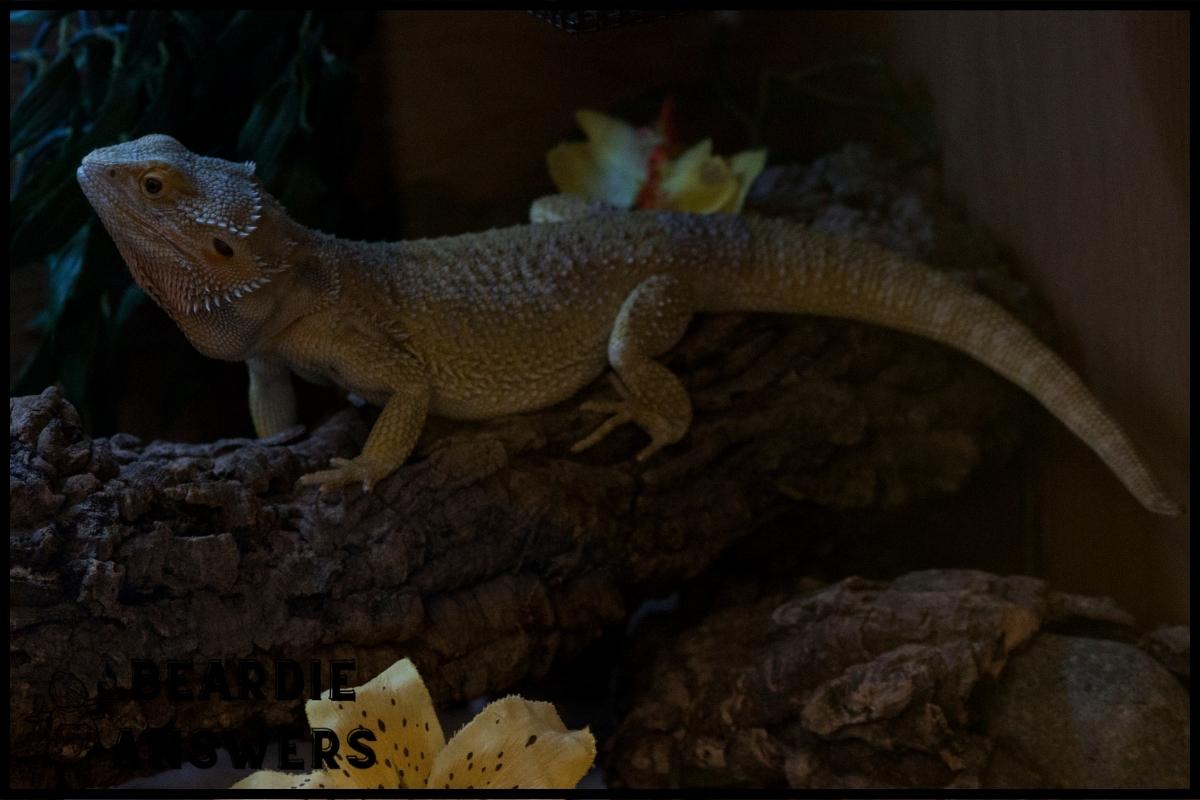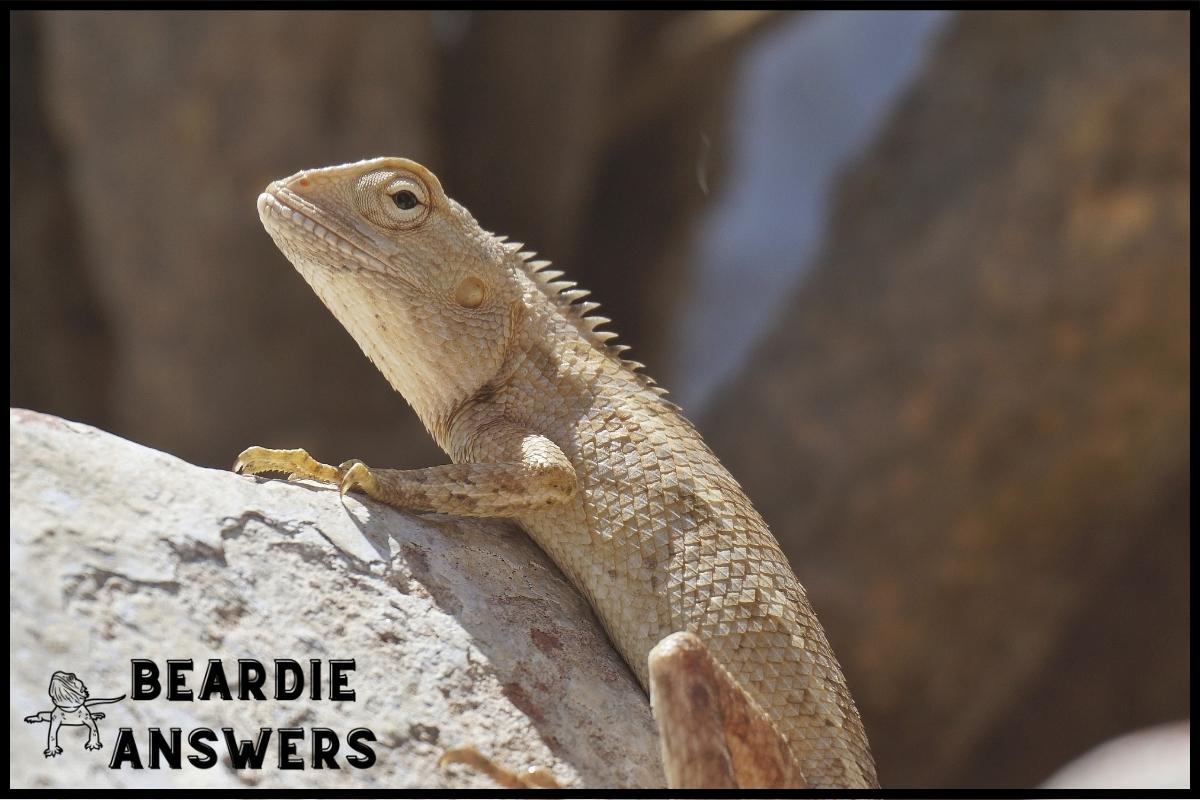While most bearded dragons have shades of brown and tan, some rare color morphs include blue, purple, red, and even pink. These colors are the result of selective breeding and genetics, and they can be quite expensive to purchase. However, it is important to remember that a bearded dragon’s health and well-being are more important than its color.
What You'll Learn
Identifying Rare Colored Bearded Dragons
Bearded dragons come in a variety of colors and patterns, some of which are very rare. Breeding techniques have been developed to try and increase the frequency of these unique color morphs. Diet also plays a role in determining the color of your bearded dragon, as certain dietary requirements can help maintain bright colors over time. Keeping up with proper nutrition is essential for preserving any coloration you may have acquired through breeding efforts.
Blue bearded dragons are particularly sought after due to their rarity and beautiful coloring. This vibrant blue shade is often paired with black or yellow stripes that give them an even more spectacular appearance. While they’re not the most common type of colored dragon available, there are still many ways to acquire one if desired.
The first step in finding a blue-hued bearded dragon is research. It’s important to understand what kind of care will be required for a dragon like this before investing in it financially or emotionally. Knowing about diet, habitat needs, and other factors associated with keeping such a pet will ensure its health and safety once obtained.
With all the necessary information gathered beforehand, you’ll be ready to start looking for your new companion!
Blue Bearded Dragons
Blue bearded dragons, also known as ‘blue ice’ or ‘turquoise,’ are a unique and distinct color mutation of the Pogona vitticeps species. They have become increasingly popular in recent years due to their vibrant coloring and rarity.
Their diet requirements include high-quality greens like collard greens and dandelion leaves, as well as insects like crickets and mealworms.
Temperature needs for these reptiles should be maintained between 75 – 85°F during the day time with a basking spot around 90°F, while at night temperatures can drop down to 65 – 72°F. Proper lighting is essential for blue beardies; they require both UVA and UVB rays that mimic natural sunlight in order to absorb calcium efficiently.
To ensure optimal health care for this rare breed, it’s important to provide them with proper nutrition, heating/lighting sources, and an appropriate enclosure size. With all of these elements met, Blue Bearded Dragons can make a wonderful addition to any home!
Looking ahead towards caring for purple bearded dragons will likely follow similar guidelines but may differ slightly depending on individual circumstances.
Purple Bearded Dragons
Majestic blue bearded dragons are beloved by reptile enthusiasts around the world. Their vibrant coloring and calm demeanor make them highly sought after pets. From their brilliant cerulean scales to their deep indigo eyes, these creatures enchant all who come in contact with them.
Now, let’s turn our attention to another unique color of bearded dragon – purple! Breeding purple bearded dragons is no easy feat as it requires knowledge of morph genetics, but when done properly, can result in a stunningly beautiful pet. The combination of rich purples and blues on its body create an almost iridescent look that demands attention from anyone nearby. Its bright colors also contrast nicely against any type of enclosure they may be kept in, making it even more aesthetically pleasing for herpetoculturists everywhere.
When discussing rarer colored beardies such as purple or red, many people overlook one crucial factor – proper husbandry. While having a visually remarkable pet is great, without providing adequate care and nutrition your new companion won’t stay healthy for very long.
Taking the time to understand what kind of environment these animals need will ensure you have a happy and healthy pet for years to come. Red bearded dragons await us now; let’s take some time to explore this magnificent creature next!
Red Bearded Dragons
Red bearded dragons are quite rare, making them a sought-after species among dragon owners. They have specific dietary needs and require different tank setup than many other dragon varieties to remain healthy and happy.
A red bearded dragon’s diet should consist of plenty of insects as well as some leafy greens such as kale or collard greens. In addition, they need an enclosure with temperatures ranging from 70°F – 85°F during the day, with higher humidity levels in the evening hours. The substrate should also be slightly dampened so that it holds moisture better, allowing the beardie to drink when needed.
These reptiles can live up to 10 years if properly cared for and housed in suitable conditions. While their care is not too much more involved than other types of bearded dragons, they do require specialized attention due to their rarity and delicate nature.
Understanding your pet’s specific needs will help ensure its long life and good health condition. It is important to take extra caution when caring for rare colored bearded dragons since any small changes in environment or diet could cause serious harm to these creatures.
With proper research and understanding you can provide a safe home for your beautiful pet while ensuring its continued health and happiness. Transitioning into the next section about ‘caring for rare colored bearded dragons’ requires knowledge on both husbandry techniques as well as understanding one’s own pet’s individual preferences.
Caring For Rare Colored Bearded Dragons
Let’s start by discussing how to feed and house rare colored bearded dragons.
We’ll need to think about what kind of food they need, as well as the environment they need to stay healthy.
Feeding
When it comes to caring for a rare colored bearded dragon, one of the most important aspects is its diet. It’s essential that they get proper nutrition and have access to the right vitamins and minerals so they can stay healthy and live long lives.
As with all bearded dragons, they should receive a balanced diet consisting of insects such as crickets, mealworms, wax worms, roaches, etc., along with leafy greens like collard greens and mustard greens.
To ensure optimal digestion and absorption of nutrients from their food, particularly in rare colored varieties, temperatures must be kept between 80-90 degrees Fahrenheit during the day time hours.
Additionally, water bowls should always be available; not only does drinking help keep them hydrated but also encourages natural behaviors such as digging and burrowing.
Housing
Now that we’ve discussed their diet, let’s talk about housing requirements for rare colored bearded dragons.
The enclosure needs to be spacious enough to allow them room to move around and explore; a minimum of 20 gallons is recommended.
Additionally, they require proper lighting with either an incandescent or full spectrum light bulb on one side and UVB bulbs on the other so they can absorb Vitamin D3 from the sun’s rays.
Heat lamps should also be used at night time in order to maintain warm temperatures which are critical for their health.
Finally, it’s important to provide adequate ventilation as well as hiding spots throughout the enclosure so your dragon has places where he/she can feel safe and secure.
Common Health Problems In Rare Colored Bearded Dragons
When it comes to taking care of rare colored bearded dragons, there are special considerations that pet owners need to be aware of. One such example is the case study of a red-colored dragon who was recently diagnosed with internal parasites. While this may not be common in every exotic species, it’s important for all pet owners to look out for possible signs or symptoms that can arise from similar health problems.
Common health issues associated with rare colored bearded dragons include:
- Skin Issues – Bearded dragons come in many different colors and patterns, but their skin is still delicate and prone to dryness, cracking, peeling and other issues if proper nutrition isn’t provided regularly.
- Internal Parasites – As mentioned earlier in the case study, some bearded dragons will suffer from internal parasites which can lead to weight loss, diarrhea and decreased appetite if left untreated.
- Stress – These reptiles are sensitive creatures and stress due to over handling or too much noise can cause them to become sick quickly. It’s important for owners to keep interactions limited until they get used to their new home environment.
- Vitamin Deficiencies – A lack of vitamins and minerals can also have an effect on a dragon’s overall health leading to weak bones or poor shedding habits.
- Poor Diet – A poor diet consisting of only crickets or mealworms should be avoided at all costs since these foods don’t provide enough nutrients needed by the reptile species resulting in stunted growth as well as malnutrition.
It goes without saying that any pet owner looking into caring for a rare color bearded dragon needs to do research before bringing one home so they know what kind of environmental factors must be considered and how best to ensure its long term health. With regular vet visits and close attention paid towards any changes in behavior or appearance, owning a unique colored reptile can be incredibly rewarding!
Conclusion
Bearded dragons come in a range of colors and patterns. Although rare, blue, purple and red are some of the most unique options out there.
It’s important to remember that while these vibrant colors may be beautiful to look at, they still require the same level of care as any other bearded dragon. Regular vet checks, providing proper nutrition, and creating an environment suitable for their needs should all be taken into consideration when caring for them.
Sure, you can go wild with color choices but don’t forget about your scaly friend’s health! After all, it’s not just what they look like on the outside – they need love too!

Hi! My name is Bryan, I am the “one behind the words” here are BeardieAnswers.com. I believe that providing quality care and nutrition is the best way to ensure the health of your pet. Every beardie is special and deserves the best care and attention. If you have questions about your bearded dragon, please don’t hesitate to ask! View My Full Author Page




